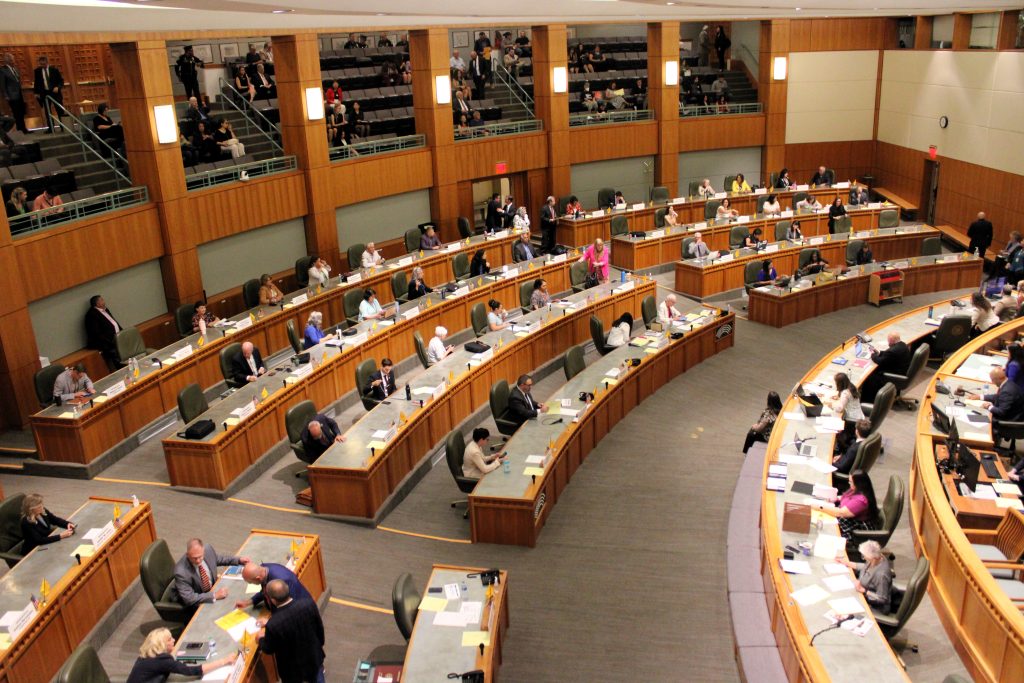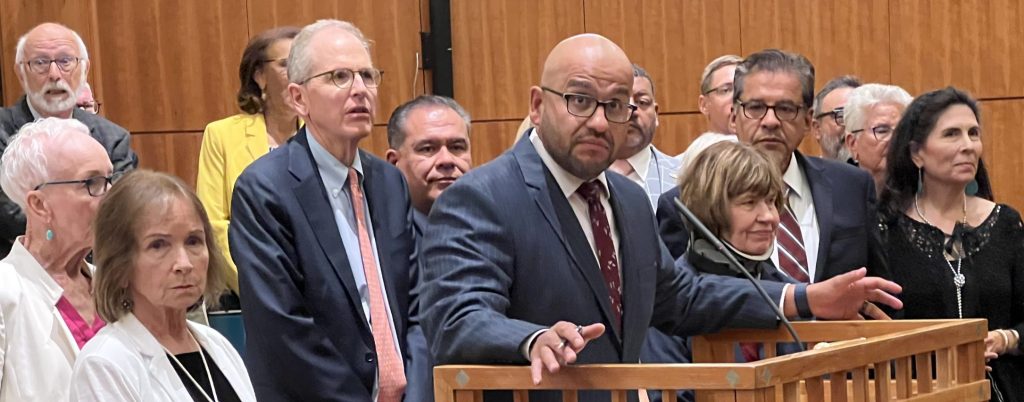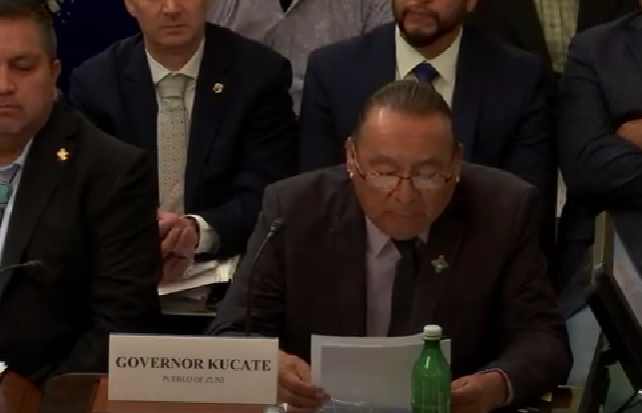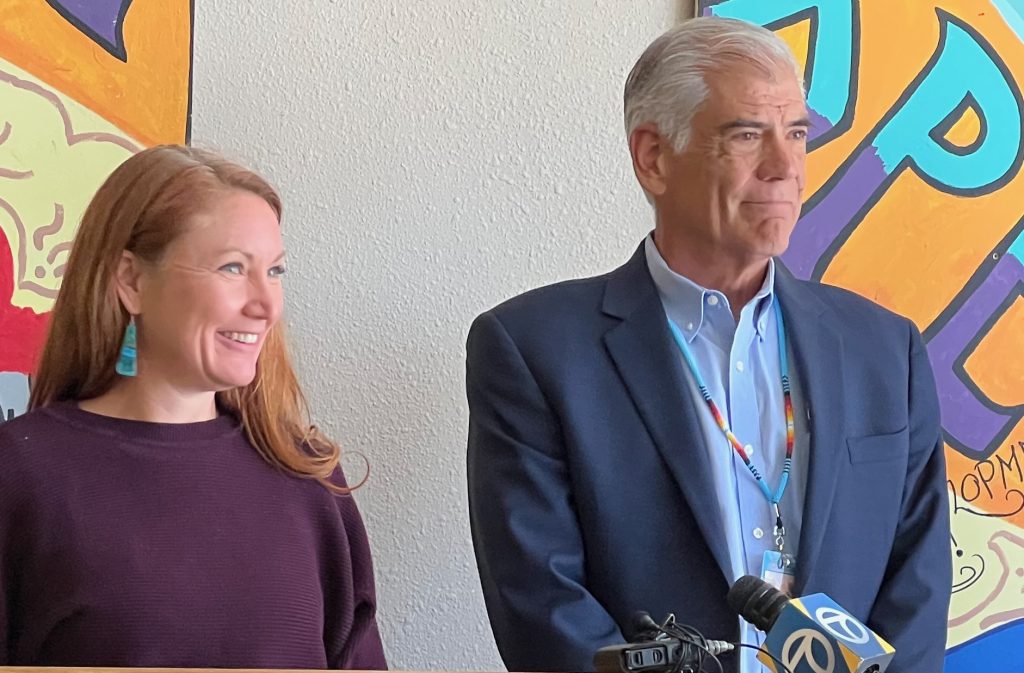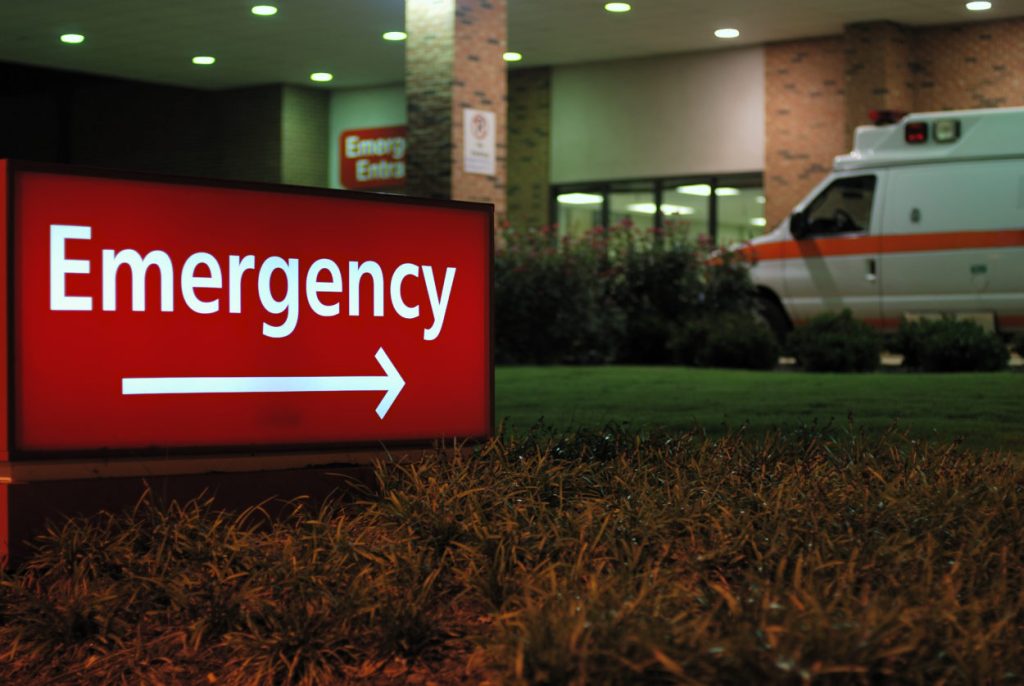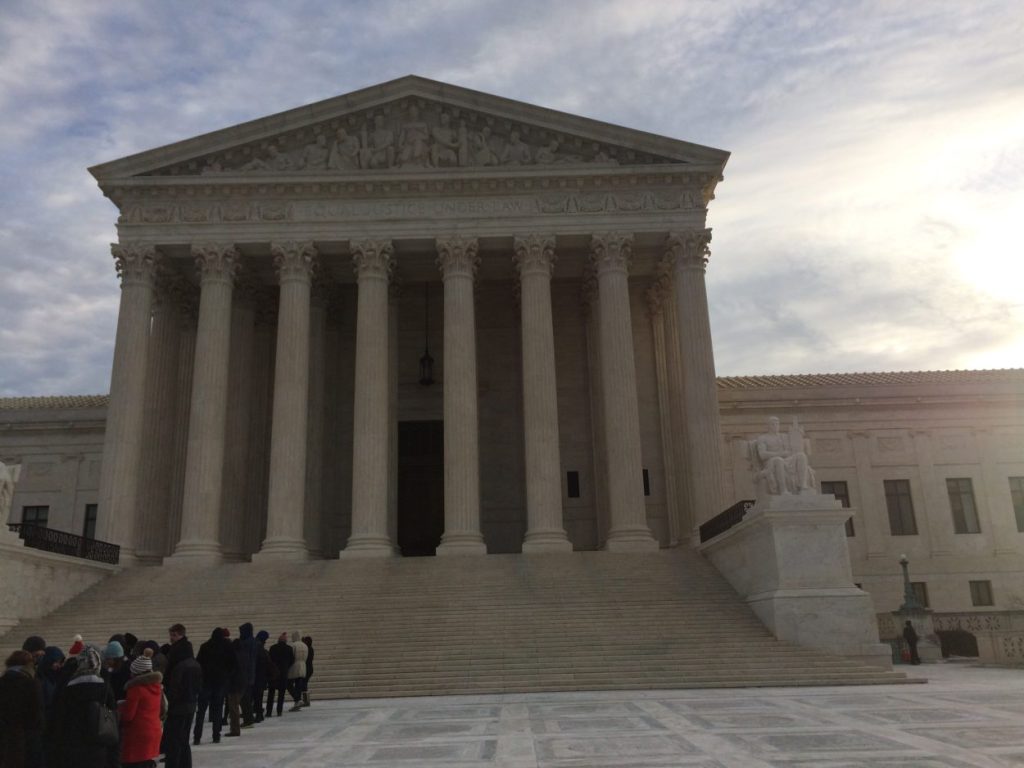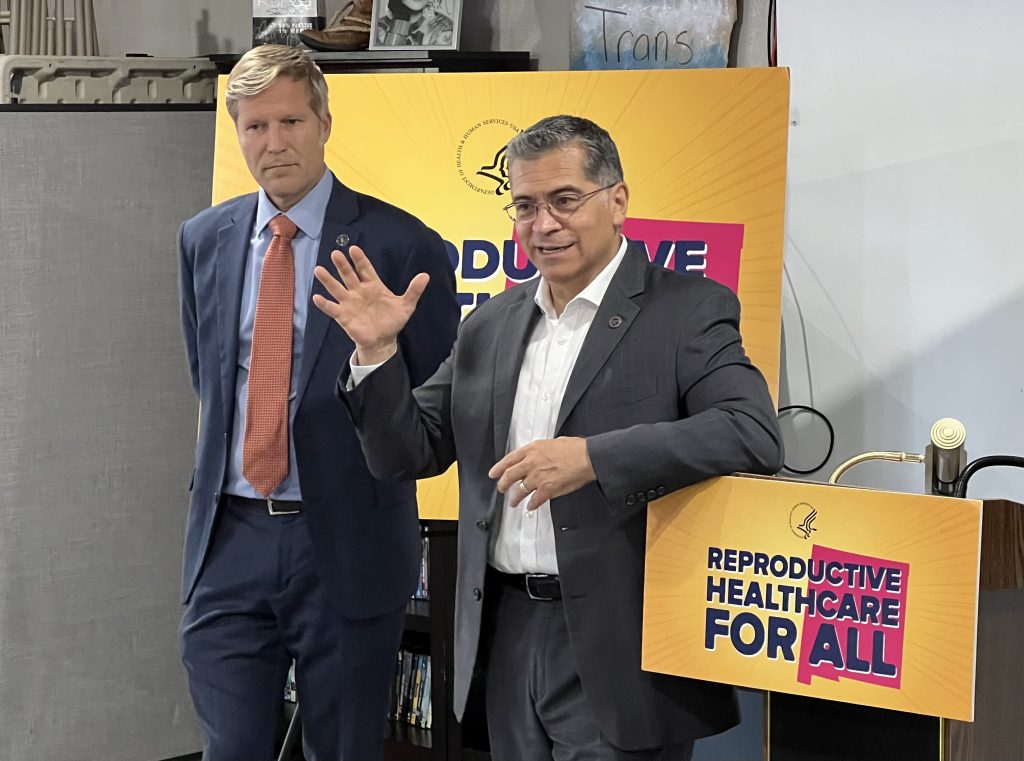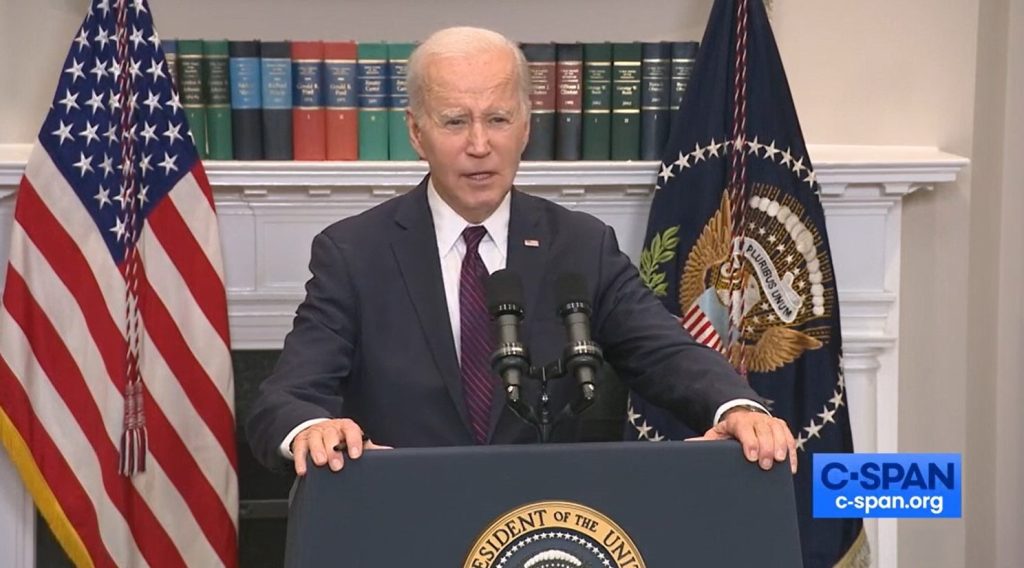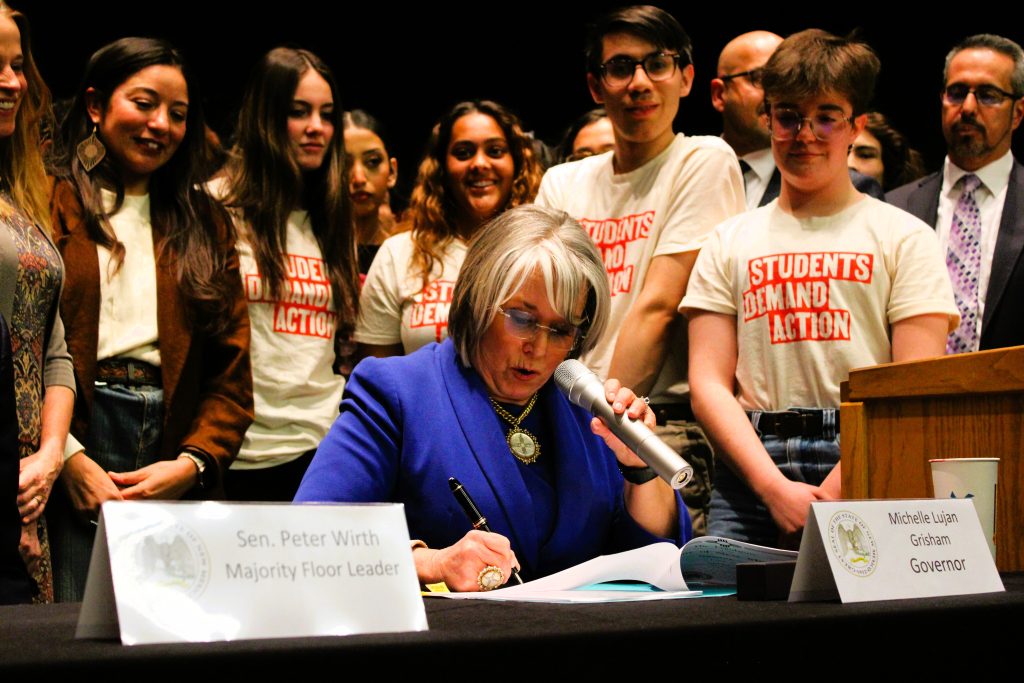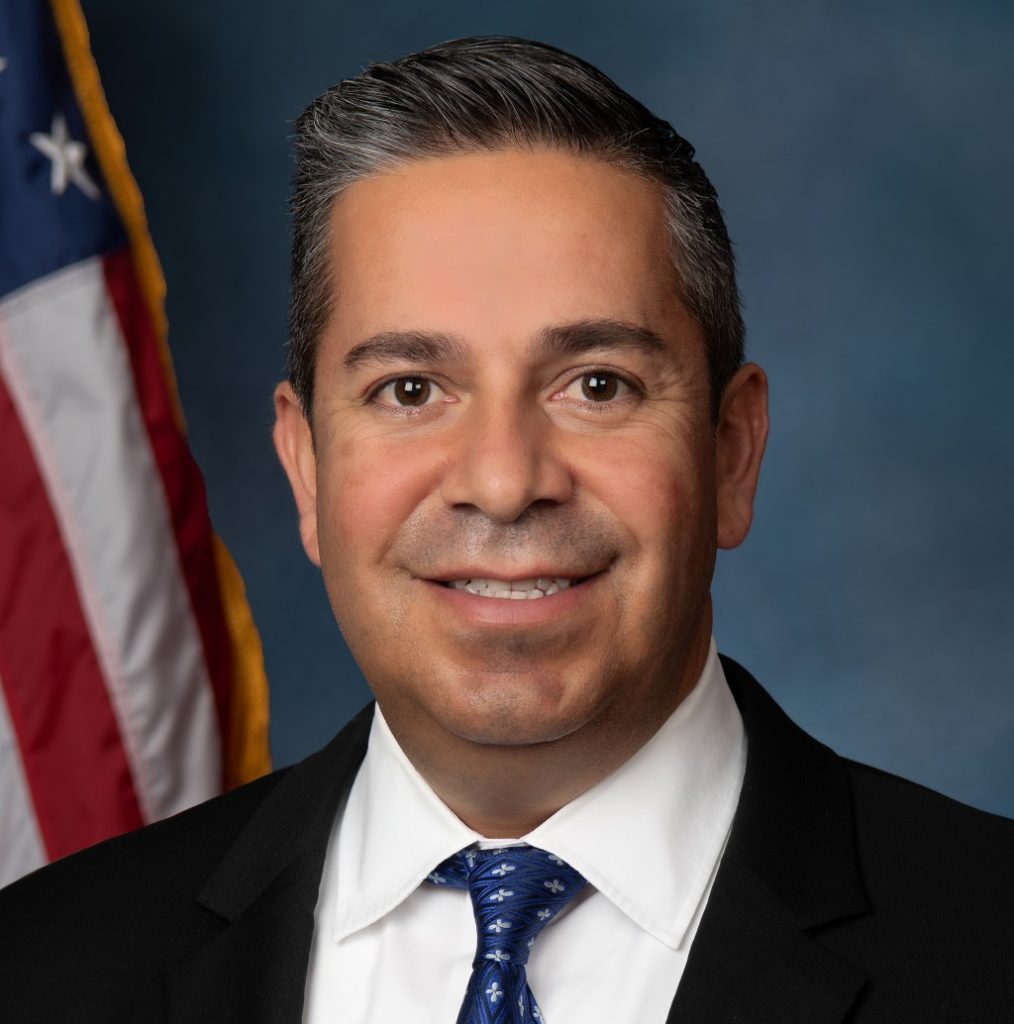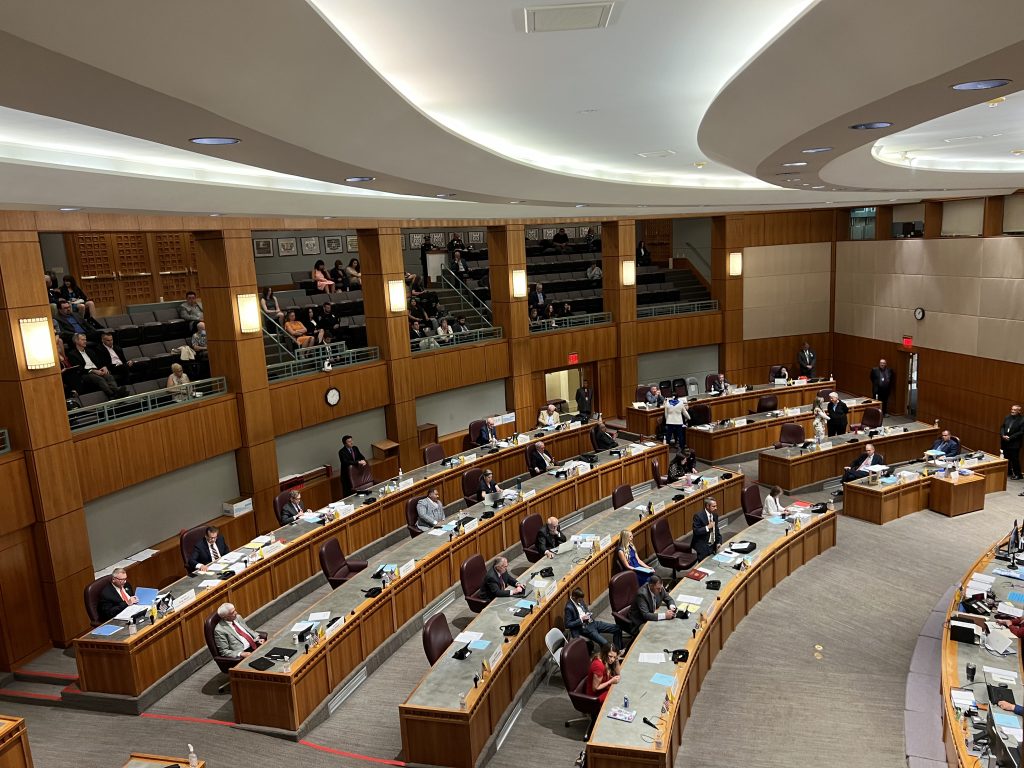On a hot, dusty day in August last year, a group of regulators from the New Mexico Environment Department and the Energy, Minerals and Natural Resources Department traveled to Counselor, New Mexico, to tour the oil and gas sites that dot the landscape of the Greater Chaco region.
The group included NMED’s Air Quality Bureau chief Elizabeth Bisbey-Kuehn, Environmental Protection Division director Sandra Ely, NMED Secretary James Kenney and EMNRD Secretary Sarah Cottrell Propst — all key regulatory figures in the state’s Methane Advisory Panel, tasked with developing new regulations around oil and gas emissions.
Teresa Seamster, Navajo Nation Counselor Chapter Health Committee member, used the opportunity to present the findings of a recently completed health impact assessment (HIA), which found periodic spikes of formaldehyde and other pollutants associated with oil and gas development, recorded at unsafe levels for short periods of time near homes.
“Formaldehyde is probably one of the most carcinogenic chemicals in air that you can have,” Seamster told NM Political Report. “It will cause irritation of the respiratory tract, it can lead to throat and nose cancer, chronic respiratory inflammation and bronchitis, it’s definitely something you do not want in the environment, and we were getting it in the open air at levels that require mitigation.”
“Formaldehyde was detected at all sites at unhealthy levels,” she added.
Seamster and other volunteers from the chapter conducted the study under the guidance of the Environmental Health Project, a nonprofit public health organization that conducts scientific air quality monitoring for communities near oil and gas development. The report is currently unpublished — and will likely remain so until the COVID-19 pandemic subsides and the Navajo Nation government is able to reopen — but NM Political Report obtained a copy.
It’s also the latest in a growing body of evidence, codified into multiple peer-reviewed studies conducted across the country, that indicates communities situated near oil and gas development are exposed to hazardous pollution at higher levels than either state or federal regulatory agencies recognize.
Studies point to hidden exposures
Residents living among oil and gas development areas across the United States, including New Mexico’s two energy-producing areas of the state, have complained for years about symptoms that they say are caused by nearby oil and gas activity. Those symptoms include nosebleeds, headaches, upper respiratory issues, asthma, migraines, and throat and nose cancer.
The HIA report findings point to a likely culprit: short-term, intense bursts of elevated levels of chemicals like formaldehyde, chloromethane, methylene chloride and chloroethylene that exceed state and federal standards, along with high levels of particulate matter.
RELATED: Report: Climate change, oil & gas emissions a bad mix for New Mexico air quality
In 2014, David Carpenter, a professor of Public Health at SUNY Albany, led a peer-reviewed study that took air samples from communities located near oil and gas activity across five states. The results were similar to those reported in the Counselor chapter HIA report.
“We found that 40 percent of the samples taken in these five states grossly exceeded federal standards,” he said, for exposure to benzene, formaldehyde, and other chemicals associated with oil and gas production. “One of our samples had 10,000 times over the EPA standard.”
Those results have been replicated by diverse groups studying air quality in oil and gas communities across the country, pointing to a dangerous gap in federal and state monitoring systems.
These studies also point to the universality of hidden emissions among oil and gas communities.
“We see it everywhere we look,” said Celia Lewis, the research and communications specialist at EHP. “Older wells might have leaks, but even new wells have venting and fugitive emissions. There are so many valves and joins and sources of emissions on a well pad or a compressor station pad. There’s plenty of opportunity.”
That means there’s a good chance communities living in the Permian Basin are also being exposed to dangerous levels of these pollutants, Lewis said.
No state or federal air monitors are picking up those exposures.
Health impacts of periodic chemical spikes
The short but intense spikes in exposure to chemicals like formaldehyde are of growing concern for public health researchers and oil and gas community members alike.
“There’s every reason to believe that a relatively short-term emission, at high concentration, can cause serious disease. The more you’re exposed, the greater the disease, no question about that,” Carpenter said.
RELATED: For Greater Chaco communities, air pollution compounds COVID-19 threat
The pollutant exposures can also compound with one another and with particulate matter, amplifying the negative health impacts, said David Brown, environmental public health scientist at EHP.
“The people are not getting exposed to just one chemical, they’re getting exposed to a mixture of chemicals, in a cloud that also has lots of particulates,” Brown said. “The gasses tend to attach the particulates and can increase the toxicity, primarily to the lungs.”
“If you frequently get exposed to formaldehyde, when it gets into the deep lung, the damage remains. The body begins to repair itself. But before the repair is over, if you get another exposure to it, that repair is set back. If you do that frequently enough, the damage will become permanent,” he said.
Formaldehyde spikes fall through regulatory cracks
Formaldehyde is an odorous gas that forms from combustion. It is also considered an ozone-precursor, meaning that it can lead to the formation of ozone when present in the air at certain concentrations. It is commonly found at oil and gas sites, where it is created from the combustion of methane, the primary component of natural gas, used in stationary combustion engines associated with oil and gas extraction-related activity.
But those dangerous spikes in formaldehyde exposure levels are completely missed by state and federal air quality monitoring, for a number of reasons.
Formaldehyde doesn’t last very long in the atmosphere, which makes it difficult to track spikes in exposure that may only last a few minutes to a couple hours. And air quality monitoring tends to average formaldehyde levels over longer periods of time, which can skew the results, according to Carpenter.
“Federal standards are averaged over long periods of time, some of them over seven days, none of them less than 24 hours,” Carpenter said. “What you have around most of these sites is episodic emissions that can lead to extremely high concentrations.”
While formaldehyde is a detriment to air quality, it is regulated differently than other air pollutants.
“There are different ways that the Clean Air Act approaches regulation and control of different types of air pollutants,” Bisbey-Kuehn said. “Some air pollutants have an ambient air quality standard, which is a health-based standard established, and those pollutants are required to be monitored. The state has an extensive monitoring network targeting those pollutants.”
Formaldehyde, on the other hand, is classified as a “hazardous pollutant,” which the U.S. EPA defines as pollutants “known to cause cancer and other serious health impacts.” There’s no ambient air quality standard established for formaldehyde, which means the state’s air quality monitoring system, which is federally-approved and federally funded, doesn’t look for it.
“What we get funding to monitor is national ambient air standards,” said Ely. “So our monitors aren’t even picking up things like formaldehyde. We don’t have an ambient concentration for [it]. We’d have to go through a whole different protocol than what we’re currently following and getting funding for.”
Relying on self-reported emission data
As a designated “hazardous pollutant,” formaldehyde regulation targets the source of emission with capture-and-destroy devices. Oil and gas producers are required to install control devices onto emission-releasing equipment that captures the formaldehyde as it is released, and then destroys 95 percent of the emission.
The state of New Mexico, like other states and the federal government, rely on self-reported estimates on formaldehyde emissions from oil and gas producers. Large facilities are required to perform monitoring and submit reports to the state annually and semi-annually on how they are complying. They are also subject to inspection every two years.
But smaller facilities, like those that make up most of the extraction activity in the Greater Chaco region, are not held to the same standards.
“They have to keep records on site, perform the same type of monitoring and stack testing, but they’re not required to report to us on as frequent a basis,” she said.
The state requires some additional monitoring to ensure compliance, Bisbey-Kuehn said, such as parametric monitoring “that we require to be conducted to ensure that formaldehyde is being destroyed as required by the regulation.”
“This is a targeted stack test seeking to determine what the after-control device emissions of formaldehyde are,” she said.
Bisbey-Kuehn was hesitant to acknowledge that the high levels of formaldehyde found in air samples documented in the HIA report could be directly attributed to oil and gas activity in the area. She said the control devices are “very reliable.”
“In order for us to understand what sources are contributing to those exceedances that were observed in the monitors, we would need to know where those monitors were located,” she said. “We would need to know how long the monitors captured data, over what time frame, whether or not it was at night or during the day — there’s a lot of information about how the data was actually collected, that can help us answer those larger questions.”
State regulations limited to federal standards
The state’s Air Quality Control Act ties New Mexico’s air quality standards to federal standards, which means the state cannot adopt standards to target formaldehyde — or even methane — that differ from federal standards.
The state has developed a clever workaround for the “methane regulations” that NMED is currently drafting with EMNRD, that might impact formaldehyde emissions, too.
“There is an exception in the statute when we have ozone concentrations in the state that are exceeding 95 percent of the national ambient air quality standard for ozone,” Bisbey-Kuehn said. “The statute directs the department to develop regulations that target ozone precursors in an effort to maintain the ambient air quality standards for ozone.”
Currently there are seven counties in the state where ozone concentrations exceed that 95 percent threshold, including oil-producing areas like San Juan County in the northwest and Eddy and Lea counties in the Permian Basin. The state is now developing regulations that will target ozone precursors in those seven counties to reduce the ozone levels there.
But without new federal regulations for formaldehyde, it’s unclear how effective the state’s rules will be at addressing these emissions.
“The assumption that most state and federal agencies make is that what’s important is the average over long periods of time. I really question that conclusion,” Carpenter said. “I would really suggest providing the communities with these [air monitoring] summa canisters, or something else that will get an immediate air sample that can be collected without any particular expertise, so that they can monitor what the episodic releases from these sites are.”
“The point is, it should be the responsibility of governments,” he said.


